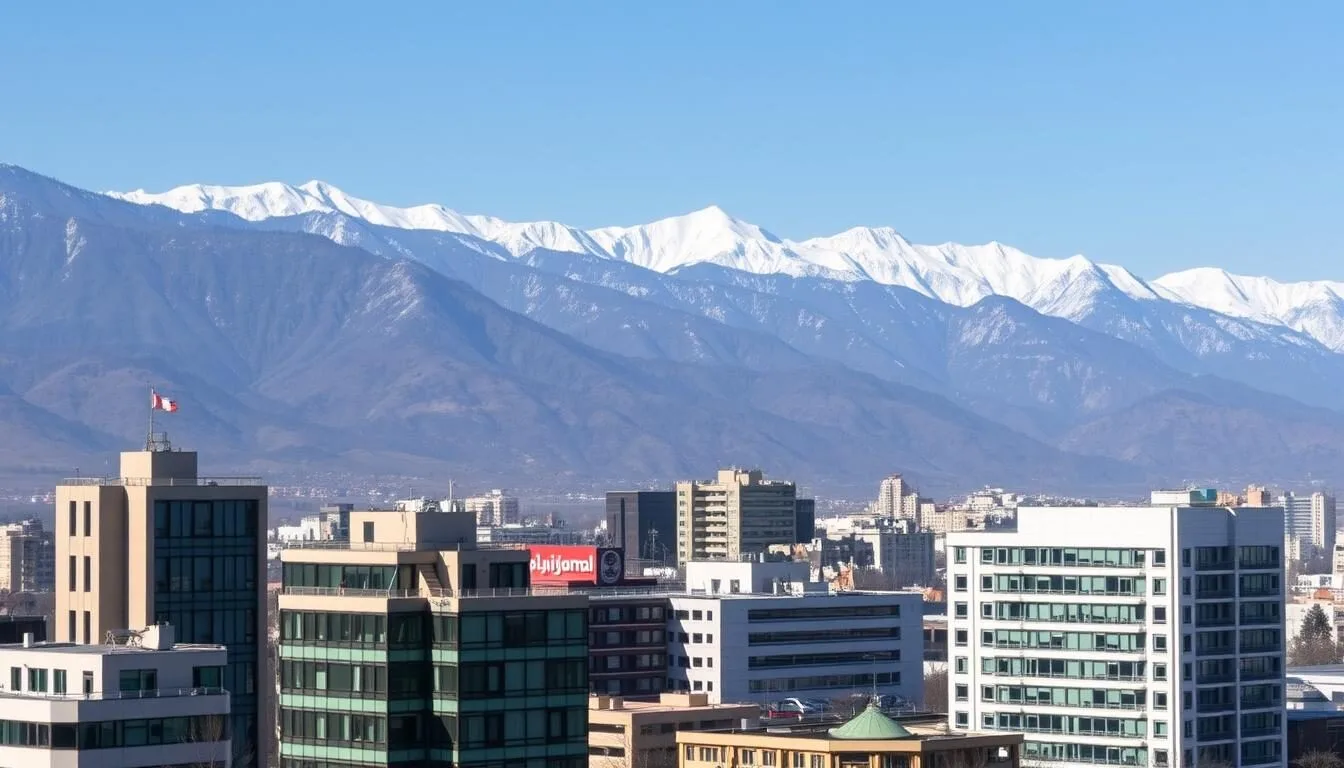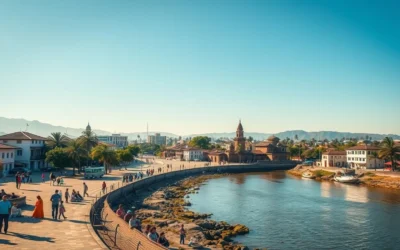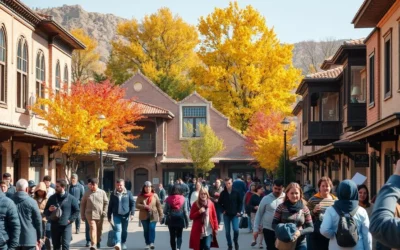Did you know Iran attracts over 9 million annual visitors with 26 UNESCO World Heritage Sites – more than Turkey or Greece? This ancient land, once the heart of the Persian Empire, offers travelers an unparalleled journey through millennia of human civilization, breathtaking landscapes, and some of the world’s most hospitable people. From the dazzling mosaic work of Isfahan’s mosques to the wind-carved formations of the Lut Desert, Iran’s treasures remain largely undiscovered by mass tourism, making now the perfect time to explore this fascinating country.
Getting There & Planning Your Journey
Most international travelers arrive in Iran through Imam Khomeini International Airport (IKA) in Tehran. Several international carriers operate flights to Iran, including Iran Air, Emirates, Turkish Airlines, and Qatar Airways. Flight availability and routes may vary based on your departure country due to political considerations.
Ready to Start Your Iranian Adventure?
Compare flight options to find the best deals for your journey to this ancient Persian land.
Visa Requirements
Most visitors to Iran require a visa. The process has become more straightforward in recent years with the introduction of visa-on-arrival for many nationalities and e-visa options. However, citizens of the US, UK, and Canada face more restrictions and need to book through authorized tour companies with pre-arranged visas.
- Apply for your visa at least 30-45 days before travel
- Ensure your passport has at least 6 months validity
- Confirm it has no Israeli stamps or visas
- Arrange mandatory travel insurance that’s valid in Iran
- Women should wear a headscarf in visa photos
Currency & Money Matters
Due to international banking restrictions, foreign credit and debit cards don’t work in Iran. You’ll need to bring enough cash (preferably Euros or US Dollars) to exchange throughout your trip. The official currency is the Iranian Rial, though locals often quote prices in Tomans (1 Toman = 10 Rials), which can be confusing for visitors.
Pro Tip: Exchange some currency at the airport for immediate needs, then find better rates at authorized exchange offices in major cities. Keep track of the current exchange rate as it can fluctuate significantly.
Best Time to Visit & Weather Tips
Iran’s climate varies dramatically across regions, from the humid Caspian coast to the scorching southern deserts. The most comfortable times to visit most of the country are during spring (April-May) and autumn (September-October) when temperatures are moderate and skies are generally clear.
Spring (March-May)
Spring brings blooming gardens and comfortable temperatures across most of Iran. Nowruz (Persian New Year) falls in March, bringing festivities but also domestic tourism and higher prices. Late April to May offers ideal weather and fewer crowds.
Autumn (September-November)
Another excellent time to visit with pleasant temperatures and clear skies. The summer crowds have dispersed, and you’ll enjoy more comfortable sightseeing conditions, especially in desert regions like Yazd and Kerman.
Avoid Summer: June through August can be extremely hot (40°C/104°F+) in many parts of Iran, especially in desert cities like Yazd and Isfahan. If you must travel during summer, plan outdoor activities for early morning or evening.
What to Pack
Iran’s dress code requires modest clothing for both men and women. Women must wear a headscarf, a manteau (long coat or tunic) that covers the arms and falls to mid-thigh or knee, and pants or long skirts. Men should avoid shorts and sleeveless shirts.
- Lightweight, loose-fitting clothes that cover appropriate areas
- Comfortable walking shoes for exploring ancient sites
- Headscarves for women (pack several as they can slip off)
- Modest swimwear if visiting the Caspian Sea
- Warmer layers if traveling in spring or autumn, especially in mountainous regions
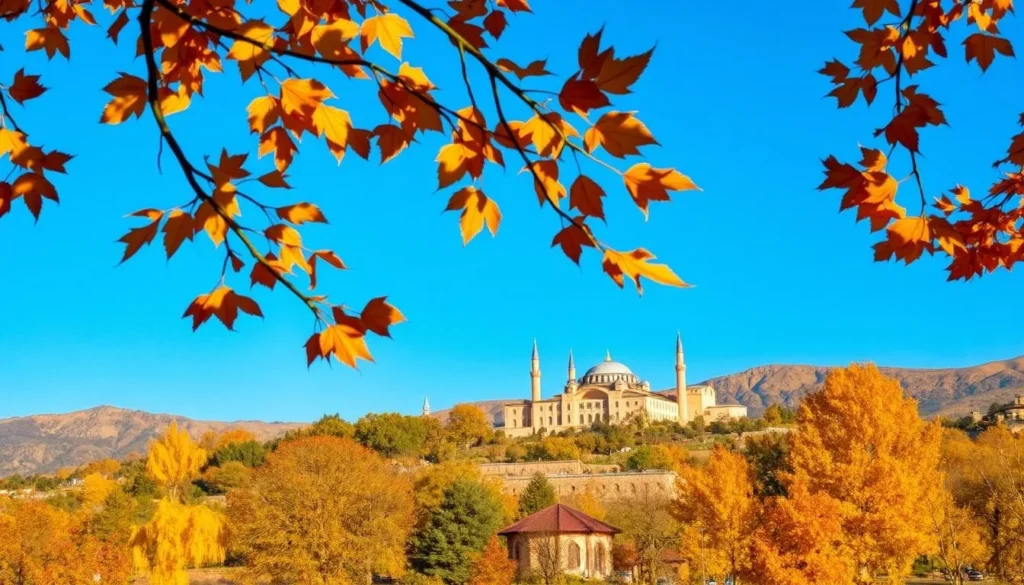
Getting Around Locally
Iran has a well-developed transportation network that makes getting around relatively straightforward. From efficient domestic flights to comprehensive bus routes, you’ll find options to suit every budget and preference.
Domestic Flights
For longer distances, domestic flights are time-efficient and reasonably priced. Airlines like Iran Air, Mahan Air, and Iran Aseman connect major cities, with flights between Tehran and destinations like Shiraz or Isfahan taking just over an hour compared to 8-10 hours by road.
Trains
Iran’s rail network is comfortable, affordable, and connects major cities. The Tehran-Mashhad line is particularly popular, and overnight sleeper trains are a great way to cover long distances while saving on accommodation. Trains in Iran are generally clean, punctual, and offer a chance to meet locals.
Buses
The most comprehensive public transport option, with VIP buses offering comfortable seats, snacks, and sometimes WiFi. Bus stations (terminals) are typically located on the outskirts of cities, so factor in additional travel time to reach your final destination.
Rental Cars & Taxis
Renting a car gives you freedom to explore at your own pace, though Iranian traffic can be challenging for foreigners. International driving permits are recognized, and fuel is inexpensive. Alternatively, taxis are abundant and affordable, with both metered and negotiated fares available.
Explore Iran at Your Own Pace
Rent a car to discover hidden gems and travel between Iran’s historic cities on your own schedule.
Local App Tip: Download Snapp, Iran’s equivalent to Uber, for convenient and affordable rides in major cities. The app works in English and eliminates language barriers when explaining destinations.

Where to Stay in Iran
Iran offers accommodations ranging from luxury hotels to traditional guesthouses, with options to suit every budget. The most memorable stays are often in historic buildings that have been converted into boutique hotels, particularly in cities like Isfahan, Yazd, and Kashan.
Traditional Houses & Boutique Hotels
For an authentic experience, stay in a renovated historic mansion. These traditional houses (often called “khanehs”) feature central courtyards with fountains, intricate stucco work, and stained-glass windows. Cities like Kashan, Yazd, and Isfahan specialize in these atmospheric accommodations.
- Saraye Ameriha (Kashan) – A 250-year-old mansion converted into a luxury boutique hotel
- Abbasi Hotel (Isfahan) – Often called the Middle East’s oldest hotel, set in a former caravanserai
- Fahadan Museum Hotel (Yazd) – A restored Qajar-era building in the heart of Yazd’s old town
Modern Hotels
Major cities offer international-standard hotels with modern amenities. Tehran has the widest selection of luxury and business hotels, while tourist centers like Isfahan and Shiraz also offer good options.
Budget Options
Mosaferkhaneh (traveler houses) and hostels provide affordable accommodation with basic facilities. These are excellent places to meet other travelers and often include breakfast. University towns like Shiraz have a good selection of budget-friendly options.
Experience Authentic Persian Hospitality
From historic mansions to modern hotels, find the perfect accommodation for your Iranian adventure.

Dining & Local Cuisine
Iranian cuisine is a highlight for many visitors, offering complex flavors, fresh ingredients, and generous hospitality. Meals typically center around rice, grilled meats, stews, fresh herbs, and distinctive spices like saffron, dried lime, and cinnamon.
Must-Try Dishes
- Chelo Kebab – The national dish featuring saffron-infused rice with grilled meat skewers
- Ghormeh Sabzi – A herb stew with red beans, lamb, and dried lime
- Fesenjan – Pomegranate and walnut stew with chicken or duck
- Tahdig – The crispy rice crust from the bottom of the pot, considered a delicacy
- Dizi/Abgoosht – A traditional lamb, chickpea, and potato stew served in a stone pot
Dining Experiences
Traditional restaurants often feature seating on raised platforms with cushions (takht), creating an authentic atmosphere. In larger cities, you’ll also find modern cafés serving international cuisine alongside Persian classics.
Tea Culture: Tea (chai) is the national drink, served throughout the day and especially after meals. It’s typically offered with crystallized sugar (nabat) or sugar cubes, which some Iranians place between their teeth as they sip rather than stirring into the tea.
Dining Etiquette
Iranians are incredibly hospitable, and meals are social occasions. Don’t be surprised if you’re invited to join a family for dinner. It’s polite to remove your shoes when dining in someone’s home and to leave a small portion of food on your plate to show you’ve had enough.

Attractions, Sightseeing & Activities
Iran’s attractions span thousands of years of human civilization, from ancient Persian sites to Islamic architectural masterpieces. Here are the must-visit highlights across the country’s diverse regions.
Tehran
Iran’s capital offers a mix of history, culture, and modern urban life. While many travelers use it primarily as an entry point, the city deserves at least two days of exploration.
- Golestan Palace – A UNESCO World Heritage site showcasing the opulence of the Qajar dynasty with stunning mirror work and tilework
- Grand Bazaar – A sprawling traditional market where you can shop for everything from spices to carpets
- Treasury of National Jewels – Housing one of the world’s most valuable jewelry collections, including the Peacock Throne
- Azadi Tower – The iconic gateway to Tehran, symbolizing modern Iran
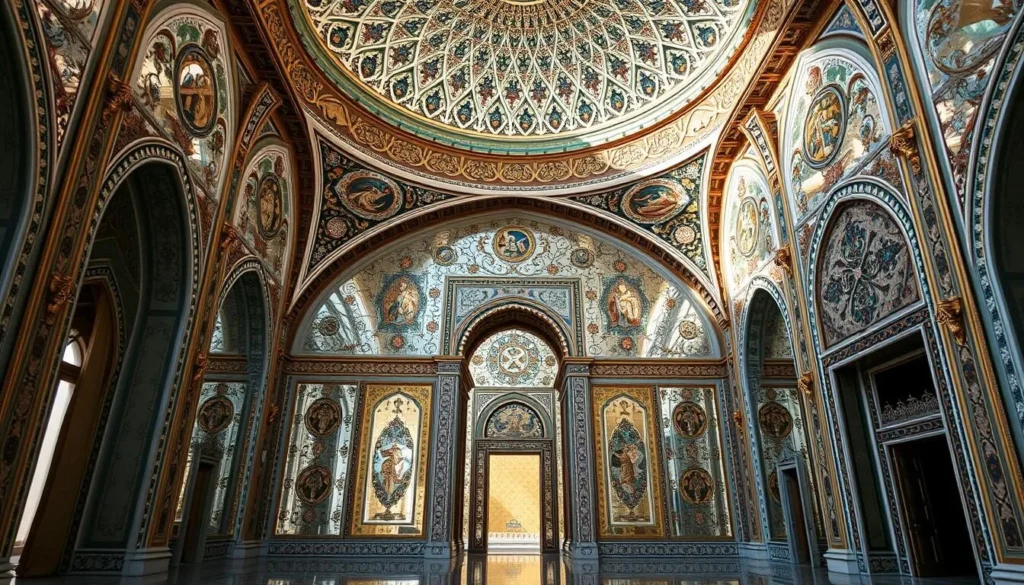
Isfahan
Often considered Iran’s most beautiful city, Isfahan’s Persian-Islamic architecture reached its zenith during the Safavid era. The Persian saying “Isfahan is half the world” reflects its importance and splendor.
- Naqsh-e Jahan Square – One of the world’s largest public squares, surrounded by architectural masterpieces
- Sheikh Lotfollah Mosque – Known for its cream-colored dome that changes color throughout the day and exquisite interior tilework
- Shah Mosque – A masterpiece of Persian architecture with its perfect proportions and blue-tiled mosaics
- Khaju Bridge – A beautiful double-decker bridge that serves as both crossing and meeting place
Discover Iran’s Cultural Treasures
Join expert-guided tours to explore Iran’s most magnificent historical sites and hidden gems.

Shiraz
Known as the city of poets, nightingales, and roses, Shiraz has been a center of Persian culture for thousands of years. It serves as the gateway to Persepolis and offers its own wealth of attractions.
- Nasir al-Mulk Mosque – The “Pink Mosque” famous for its stunning stained glass windows that create a kaleidoscope of colors in the morning light
- Eram Garden – A beautiful Persian garden with a historic pavilion, reflecting pools, and cypress trees
- Tomb of Hafez – The final resting place of Iran’s beloved poet in a peaceful garden setting
- Vakil Bazaar – A historic market dating back to the 11th century, perfect for souvenir shopping
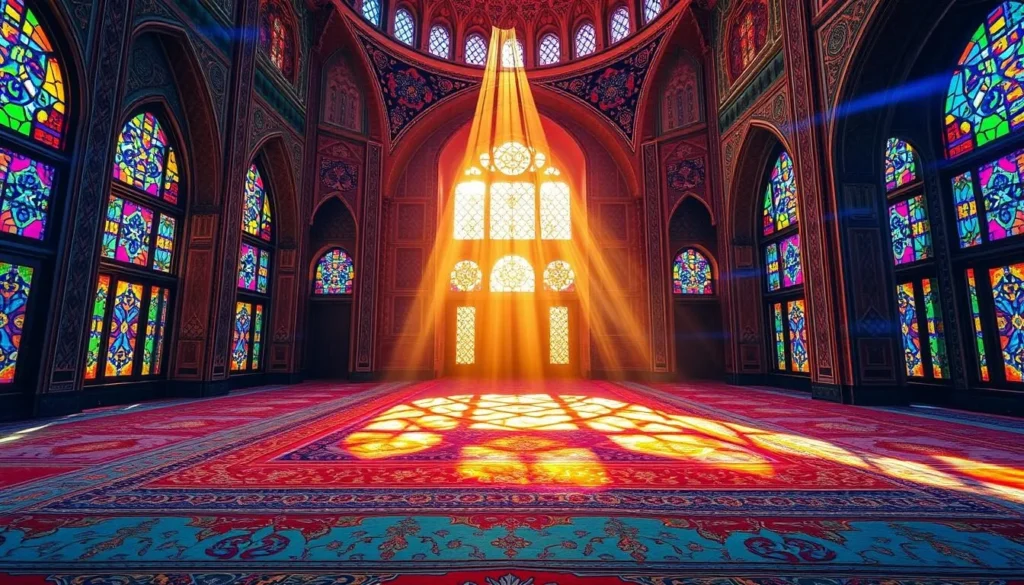
Persepolis
The ceremonial capital of the Achaemenid Empire (550-330 BCE), Persepolis represents the pinnacle of ancient Persian civilization. Located about 60km northeast of Shiraz, this UNESCO World Heritage site features monumental staircases, imposing gateways, and intricate reliefs depicting representatives from the 23 nations of the Persian Empire.
Visitor Tip: Arrive at Persepolis early in the morning to avoid crowds and heat. Hiring a knowledgeable guide will significantly enhance your understanding of the site’s historical significance and architectural details.
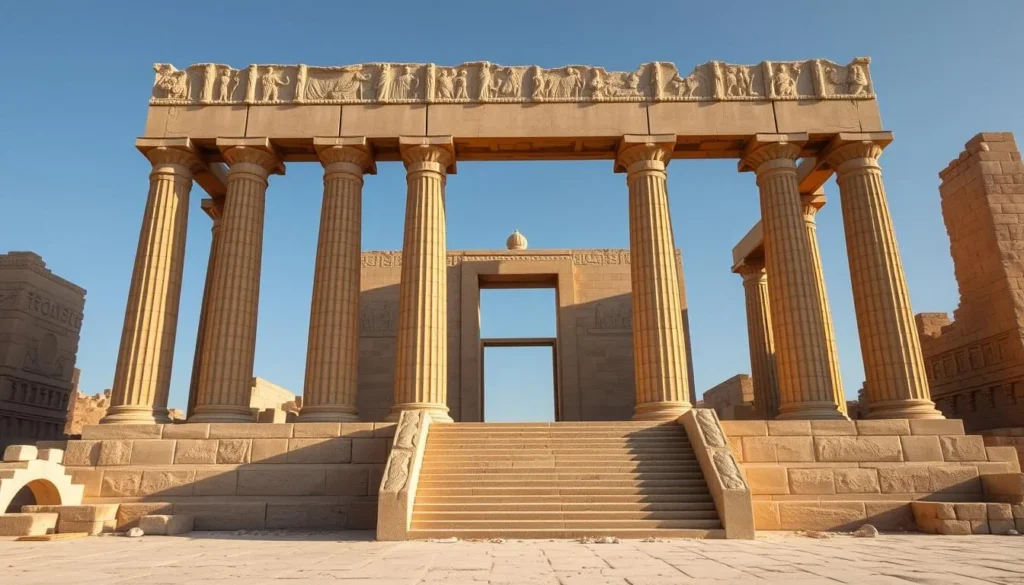
Yazd
One of the oldest continuously inhabited cities in the world, Yazd is known for its unique desert architecture. The historic city center is a maze of winding lanes, mud-brick houses, and distinctive wind towers (badgirs) that provided natural air conditioning in the desert heat.
- Jameh Mosque – Featuring the highest minarets in Iran and exquisite tilework
- Zoroastrian Fire Temple – Housing a flame said to have been burning continuously since 470 CE
- Towers of Silence – Ancient Zoroastrian structures used for sky burials
- Amir Chakhmaq Complex – An impressive three-story facade with symmetrical iwans and a small bazaar
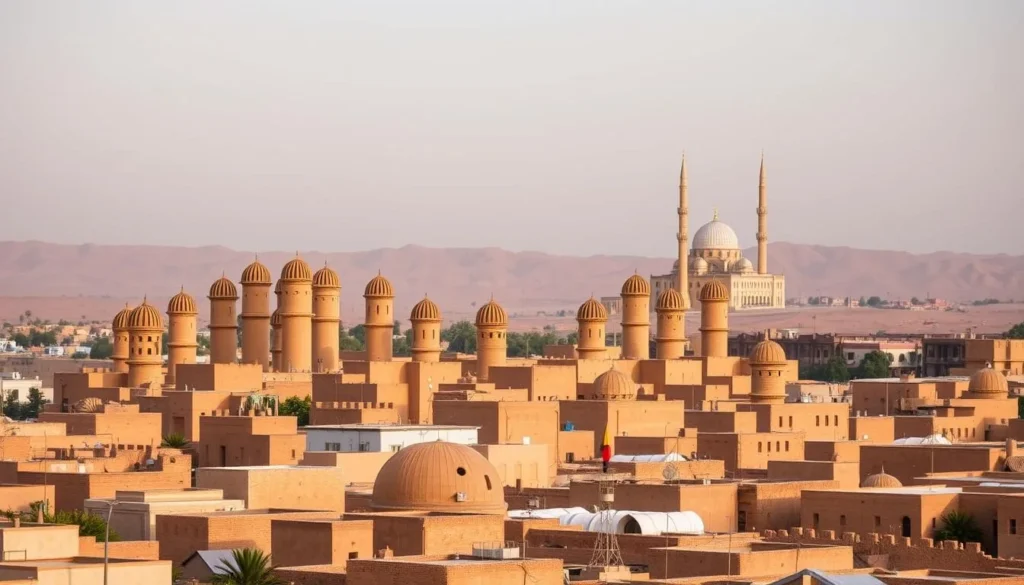
Museums, Cultural Spots & Festivals
Iran’s rich cultural heritage is preserved in its excellent museums and celebrated through vibrant festivals that offer visitors insight into both ancient traditions and contemporary life.
Top Museums
- National Museum of Iran (Tehran) – Housing artifacts spanning the rich history of Iran from prehistoric to Islamic periods
- Tehran Museum of Contemporary Art – Home to an impressive collection of Western and Iranian modern art
- Carpet Museum (Tehran) – Showcasing the evolution and artistry of Persian carpet-making
- Water Museum (Yazd) – Explaining the ingenious qanat water systems that made desert life possible
Cultural Experiences
Beyond museums, Iran offers numerous opportunities to engage with living culture through workshops, performances, and religious sites.
Zurkhaneh
These traditional “houses of strength” showcase an ancient Iranian martial art that combines elements of wrestling, calisthenics, and music. Performances typically last about an hour and visitors are welcome to observe this UNESCO-recognized cultural heritage.
Vank Cathedral
Located in Isfahan’s Armenian Quarter, this stunning 17th-century church features an interior that blends Armenian Christian imagery with Persian Islamic decorative styles, creating a unique cultural fusion.
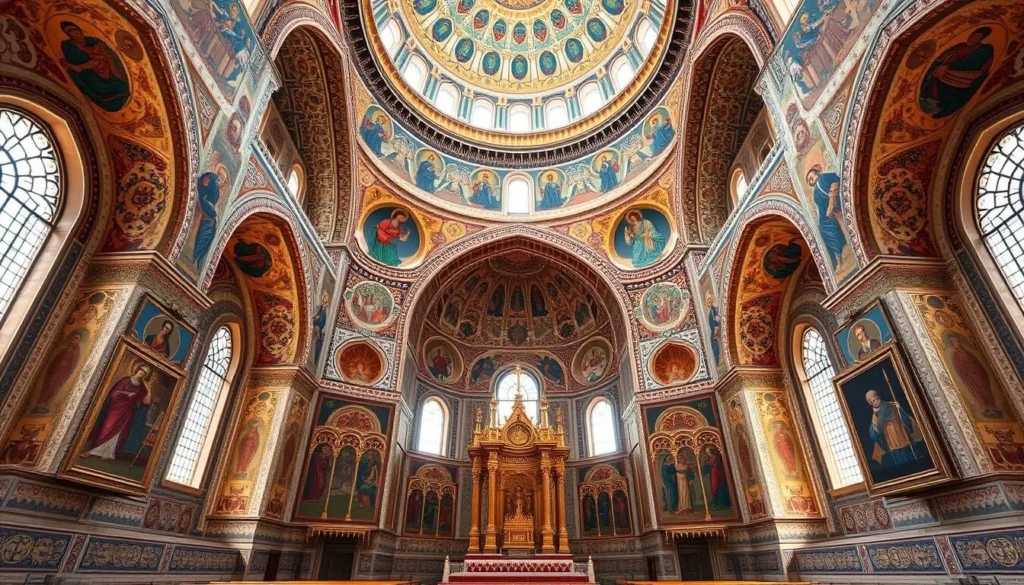
Major Festivals
Timing your visit to coincide with an Iranian festival can add a special dimension to your trip. These celebrations offer insight into local traditions and often feature special foods, music, and customs.
- Nowruz (March 21) – Persian New Year marking the spring equinox with elaborate table settings, special foods, and family gatherings
- Tirgan (July) – A summer water festival dating back to ancient times
- Yalda Night (December 21) – The winter solstice celebration where families gather to read poetry, eat pomegranates and watermelon, and stay awake through the longest night
- Ashura (varies) – A solemn Shia observance commemorating the martyrdom of Imam Hussein with processions and passion plays
Cultural Tip: When visiting religious sites during festivals or regular prayer times, be especially mindful of appropriate behavior and dress. Photography may be restricted during ceremonies, so always ask permission.
Nature & Outdoor Experiences
While Iran’s cultural heritage often takes center stage, the country’s diverse landscapes offer spectacular outdoor adventures, from skiing in the Alborz Mountains to stargazing in vast deserts.
Desert Expeditions
Iran is home to two of the world’s most spectacular deserts, offering otherworldly landscapes and unforgettable experiences.
Dasht-e Kavir (Great Salt Desert)
This vast salt desert in central Iran features salt marshes, seasonal lakes, and striking geological formations. The small town of Khoor makes an excellent base for desert excursions.
Dasht-e Lut (Lut Desert)
A UNESCO World Heritage site and one of the hottest places on Earth, featuring remarkable wind-eroded formations called “kaluts” that resemble a ruined city. The area around Kerman provides access to this extraordinary landscape.
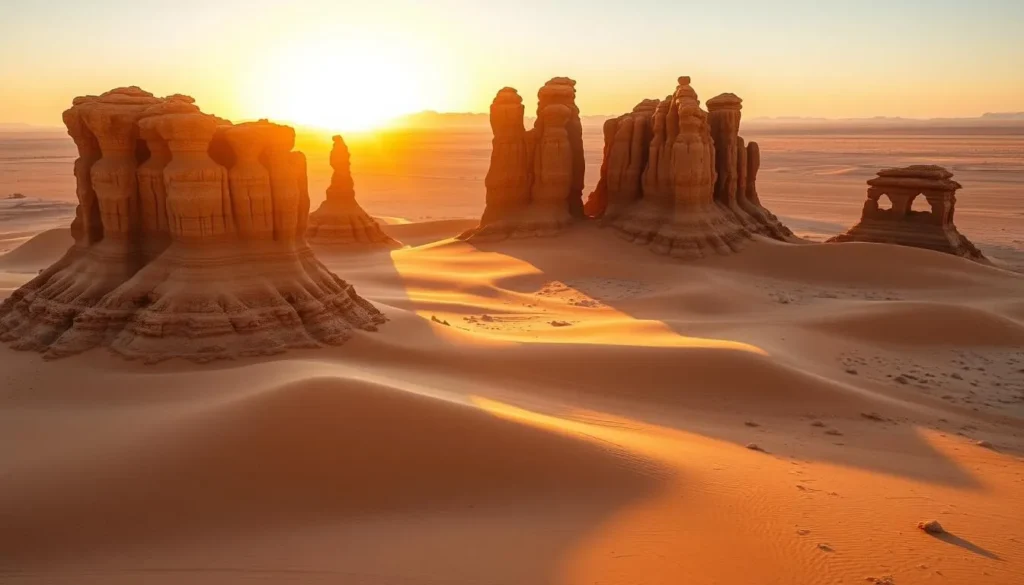
Mountain Adventures
The Alborz and Zagros mountain ranges offer excellent hiking, climbing, and winter sports opportunities. Mount Damavand, a dormant volcano and the highest peak in the Middle East at 5,610 meters, presents a challenging but non-technical climb for experienced mountaineers.
- Dizin Ski Resort – Iran’s largest ski area, located just two hours from Tehran, offering surprising powder conditions from December to May
- Alamut Valley – Known as the “Valley of the Assassins,” featuring dramatic scenery and historic castles
- Margoon Waterfall – A spectacular 70-meter cascade near Sepidan in Fars Province
Coastal Escapes
Iran’s northern Caspian Sea coast offers a completely different experience from the rest of the country, with lush forests, rice paddies, and beaches. The southern Persian Gulf and Gulf of Oman coasts feature dramatic cliffs, traditional fishing villages, and tropical islands.
Island Highlight: Hormuz Island in the Persian Gulf is known as the “Rainbow Island” for its spectacular red ochre beaches and multi-colored volcanic landscape. It makes an excellent day trip or overnight excursion from Bandar Abbas.
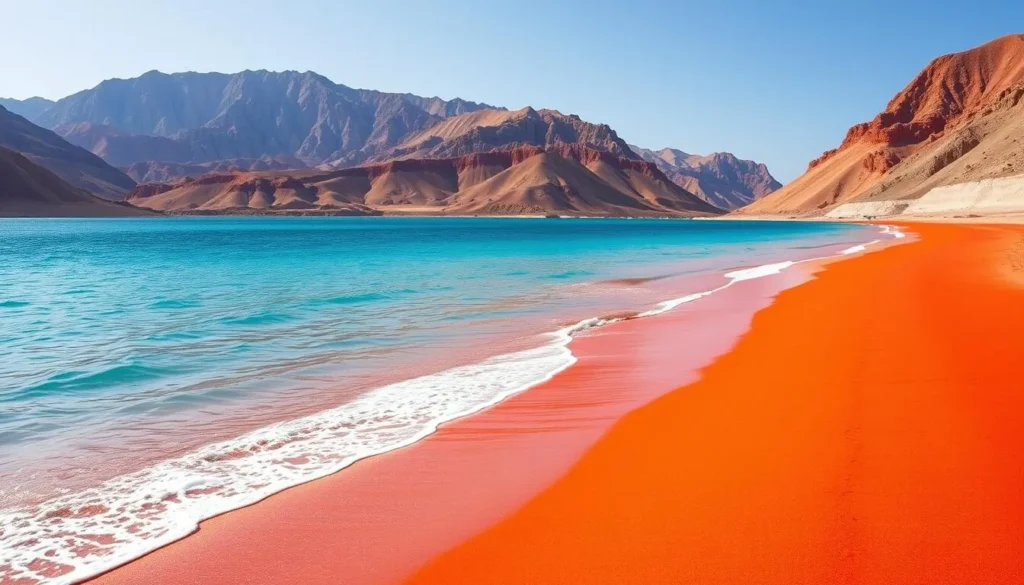
Experience Iran’s Natural Wonders
From desert expeditions to mountain treks, discover the breathtaking landscapes of this diverse country.
Safety, Etiquette & Local Customs
Despite media portrayals, Iran is generally a very safe country for travelers, with low crime rates and extremely hospitable locals. Understanding and respecting local customs will enhance your experience and help you navigate cultural differences.
Safety Considerations
Iran has one of the lowest crime rates in the Middle East, and violent crime against foreigners is extremely rare. The most common issues travelers face are occasional petty theft in crowded areas and traffic accidents.
Political Awareness: Avoid political demonstrations and be discreet when discussing sensitive political topics. Photography of government or military installations is strictly prohibited.
Dress Code
Iran enforces Islamic dress codes, though standards have relaxed somewhat in recent years, particularly in major cities.
For Women
Women must cover their hair with a headscarf and wear loose-fitting clothes that cover arms to the wrist and legs to the ankle. A knee-length tunic or coat (manteau) over pants is standard. In more conservative areas, a chador (full-body covering) may be required at certain religious sites.
For Men
Men should wear long pants and avoid very short-sleeved shirts. Shorts are not acceptable in public places, though t-shirts are generally fine. At religious sites, men may need to wear long-sleeved shirts.
Social Etiquette
Iranians are famous for their hospitality and will often go out of their way to help visitors. Understanding a few cultural norms will help you navigate social situations gracefully.
- Taarof – This complex system of politeness involves refusing offers several times before accepting. If someone offers you something, decline once or twice before accepting if you’re interested.
- Greetings – Handshakes are common between men, while women may prefer to nod or place a hand over their heart. Follow the lead of locals.
- Shoes – Remove your shoes when entering homes, many traditional restaurants, and all religious sites.
- Photography – Always ask permission before photographing people, especially in rural areas and at religious sites.
Religious Considerations
Iran is an Islamic Republic where religious customs influence daily life. During the holy month of Ramadan, eating, drinking, and smoking in public during daylight hours is prohibited, though many restaurants remain open for tourists and non-fasting Iranians.
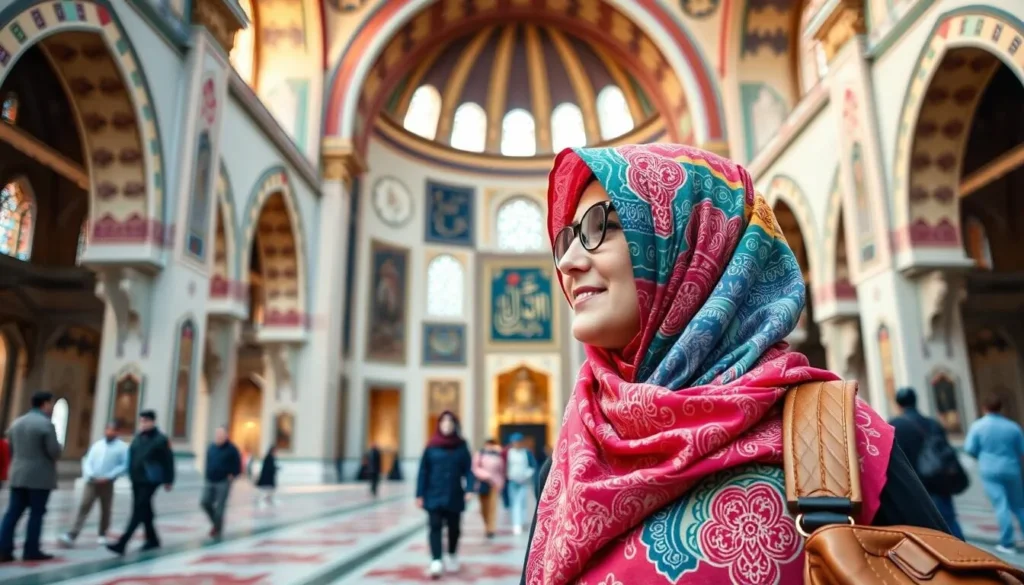
Practical Travel Tips
These essential tips will help you navigate the practical aspects of traveling in Iran, from connectivity to shopping for souvenirs.
Internet & Communication
Internet access is widely available in Iran, though certain websites and social media platforms (including Facebook, Twitter, and YouTube) are blocked. Many travelers use VPN services to access these sites, though be aware that not all VPNs work reliably in Iran.
SIM Card: Purchase a local SIM card from providers like Irancell or MCI at the airport or in city centers. You’ll need your passport for registration, and data packages are very affordable.
Shopping & Souvenirs
Iran offers exceptional shopping opportunities, particularly for handicrafts. Bargaining is expected in bazaars, though not in fixed-price shops.
- Persian Carpets – The ultimate Iranian souvenir, available in various styles, sizes, and price points
- Miniature Paintings – Delicate artworks depicting Persian poetry and mythology
- Ceramics – Particularly the blue pottery from Isfahan and Natanz
- Spices – Especially saffron, which is significantly cheaper in Iran than elsewhere
- Textiles – Including termeh (fine embroidered cloth) and ghalamkar (hand-printed cotton)
Export Restrictions: Antiques over 100 years old cannot legally leave the country. For carpets, obtain a receipt that confirms the item is new or less than 100 years old to avoid issues at customs.
Language
The official language is Persian (Farsi), which uses the Arabic script with additional letters. English is not widely spoken outside major tourist areas and upscale hotels, though younger Iranians often have some English knowledge.
Useful Phrases
Salām – Hello
Mersi – Thank you
Bebakhshid – Excuse me/Sorry
Chand ast? – How much is it?
Khoda hafez – Goodbye
Numbers
Learning to recognize Persian numbers is helpful for understanding prices. Note that Iran uses both Western (1, 2, 3) and Persian (۱, ۲, ۳) numerals, sometimes interchangeably.
Health & Medicine
No special vaccinations are required for Iran, though standard travel immunizations are recommended. Tap water is generally safe in major cities, but bottled water is widely available and recommended for sensitive stomachs.
Medical Care: Iran has good quality medical facilities in major cities. Pharmacies are well-stocked, and many medications are available without prescription. Bring any essential prescription medications with you, along with a doctor’s note.
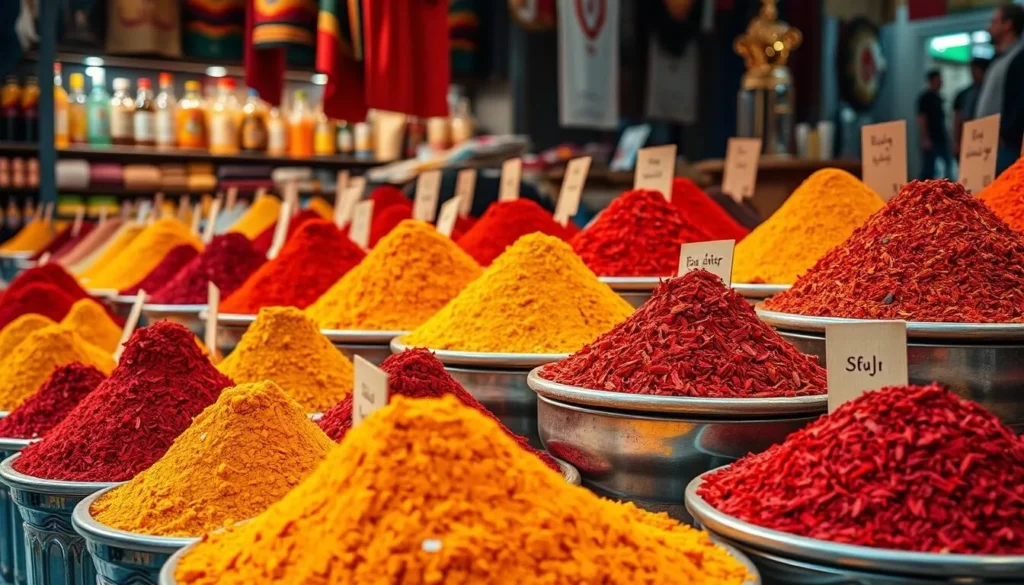
Conclusion
Iran offers travelers a rare combination of ancient history, architectural splendor, diverse landscapes, and unparalleled hospitality. Beyond the magnificent UNESCO World Heritage sites and breathtaking natural wonders, it’s the warmth of the Iranian people that leaves the most lasting impression on visitors.
As you plan your journey through this fascinating country, prepare to have your preconceptions challenged and your understanding enriched. From the snow-capped mountains of the north to the tropical islands of the south, from bustling modern cities to tranquil desert oases, Iran rewards curious travelers with experiences that can’t be found anywhere else.
From ancient caravan routes to saffron-infused feasts, Iran offers one of Asia’s most profound travel adventures – where will your Persian journey begin?
Start Planning Your Iranian Adventure
Discover the wonders of ancient Persia with flights, accommodations, and guided experiences.
Learn More About Persian Hospitality
The above is subject to change.
Check back often to TRAVEL.COM for the latest travel tips and deals.
